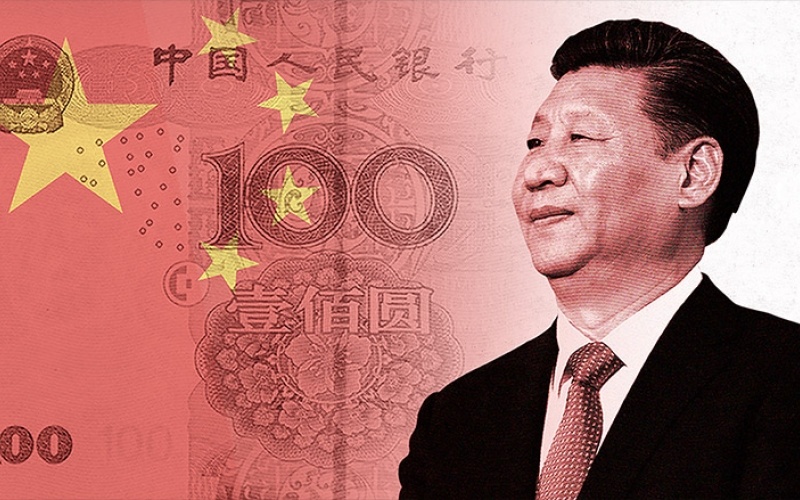After a good run of growth, China’s economy braces for bumps

JUST a few years ago Wuhan, a sprawling metropolis in the middle reaches of the Yangtze River, exemplified China’s economic woes. Municipal debt had soared. The most senior local official was known as “Mr Dig Up The City”, a reference to his zeal for grandiose construction projects. A movie theme park, intended as a landmark, closed after failing to draw crowds. It would take nearly a decade, it was estimated, to sell all of Wuhan’s vacant homes.
These days, the city of 11m stands as a monument to China’s resilience. Its economy has accelerated even as the government has controlled debt more strictly. Five subway lines were opened or extended in the past two years alone; they are jammed in rush hour. Investment is pouring into semiconductor production, biotech research and internet-security companies. The glut of unsold homes is almost cleared.
Get our daily newsletter
Upgrade your inbox and get our Daily Dispatch and Editor’s Picks.
China’s economy, like Wuhan’s, is in much better shape than it was in late 2015. Then, the country was reeling from a stockmarket crash, suffering from capital outflows and accumulating debt at an alarming rate. But figures reported on April 17th showed growth of 6.8% in the first three months of 2018 compared with the same period a year ago. In nominal terms growth was above 10%. China’s total debt-to-GDP ratio has stabilised, a sign that the risk of financial crisis has faded (see chart).
The improvement in China’s fortunes can be traced to three factors. First, the government has started to tackle several ingrained problems. After a long period of overproduction of steel and coal, a campaign to close unused capacity restrained output and pushed up prices. To reduce the property overhang, local governments bought millions of unsold homes from developers and gave them to poorer citizens.
Financial regulators have taken aim at banks’ murky off-balance-sheet loans, and at heavily indebted borrowers such as property developers. Wang Tao of UBS, a Swiss bank, notes that these efforts have given investors more confidence. Chinese shares listed in Hong Kong have risen in value by a third over the past two years. The government has also helped arrange behind-the-scenes rescues of troubled firms. One was in Wuhan. The big local steel company, bleeding cash, merged with its much stronger counterpart in Shanghai in 2016. The combined entity is profitable.
A second factor is that China’s economy is maturing. Growth is bound to slow as China gets richer, but structural changes are also making growth more stable. Thanks in part to a falling working-age population, which peaked in 2011, incomes are growing faster than the overall economy. This, in turn, is rebalancing the economy. Excessive reliance on investment is giving way to consumption. And heavy industry is yielding to services, which now account for more than half of GDP, up from a third two decades ago.
At the same time, China is reaping returns on some big investments of the past decade, such as high-speed rail in densely populated areas. Qin Zunwen, a government economist in Wuhan, says that although local debt shot up, it was almost all tied to infrastructure—half a dozen subway lines, bridges spanning the Yangtze River, elevated expressways—that is now being used. “Yes, it’s much more than we had in the past,” he says. “Has it exceeded our needs? No.”
The final factor has been luck. Robust growth in America and Europe has given Chinese firms a lift. After falling in 2016, exports have rebounded. The rise in global commodity prices has filtered into stronger industrial revenues in China, boosting miners and metal producers. That has helped them service their debts. And it has made the task of deleveraging for the wider economy less daunting. Outflows of hot money have been curbed by tighter capital controls. China has also benefited from a weak dollar since the start of 2017, which has increased the yuan’s appeal.
The coming few quarters are likely to be bumpier, however. The biggest immediate worry is President Donald Trump. The American administration has announced tariffs on about $ 50bn of Chinese exports and may soon triple that. Exports to America are only a fraction of Chinese GDP, but a trade war between the world’s two biggest economies could wreak havoc on sentiment and supply chains.
The downsides of the campaign to control debt might also become more apparent. Last year regulators focused on the financial system, clamping down, for instance, on borrowing to buy bonds. This year their focus has shifted to government funding. That will have a more direct impact on the economy. China has tried before to rein in profligate local officials, but they have found ways around the rules. A popular recent trick has been to disguise debt in public-private partnerships. Policy this time seems stricter. Subway construction has been halted in cities whose finances were too weak. Tighter liquidity could also weigh on investment. Credit growth is the weakest since 2015.
Over the past decade China’s leaders have revved up investment whenever the economy has slowed beyond their comfort zone. But Xi Jinping, the powerful president, has often said that the quality of growth matters more than the quantity. Officials in Wuhan seem to be getting the message. At recent meetings they have stressed the importance of fostering innovation, cleaning up the environment and keeping a lid on debt. The test is whether they will still be singing that same tune as growth turns down.
This article appeared in the Finance and economics section of the print edition under the headline “Life after digging”
